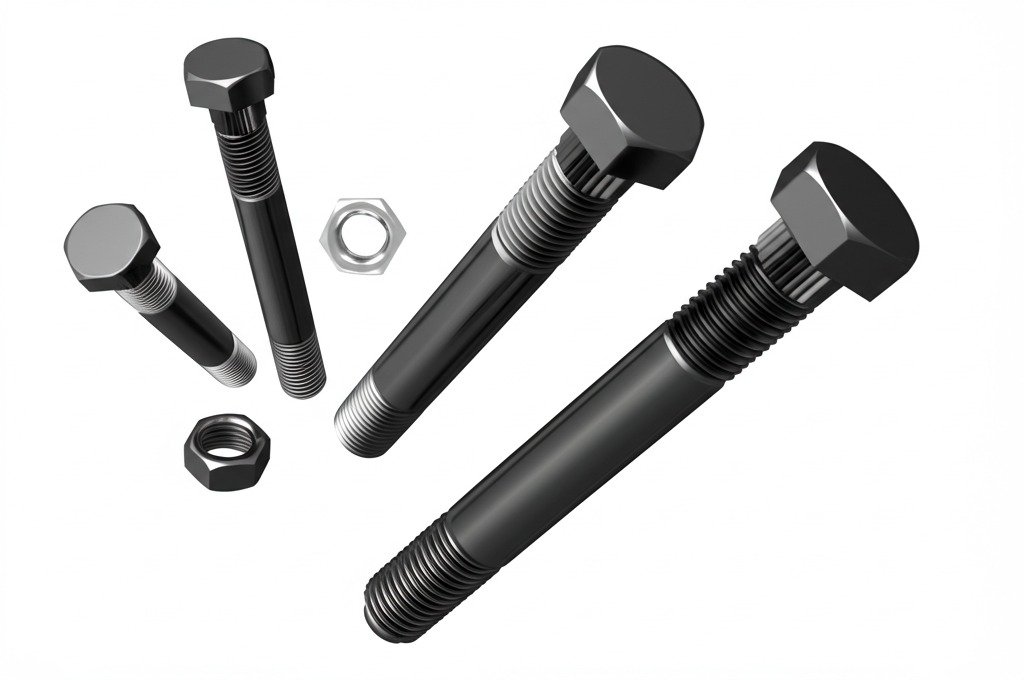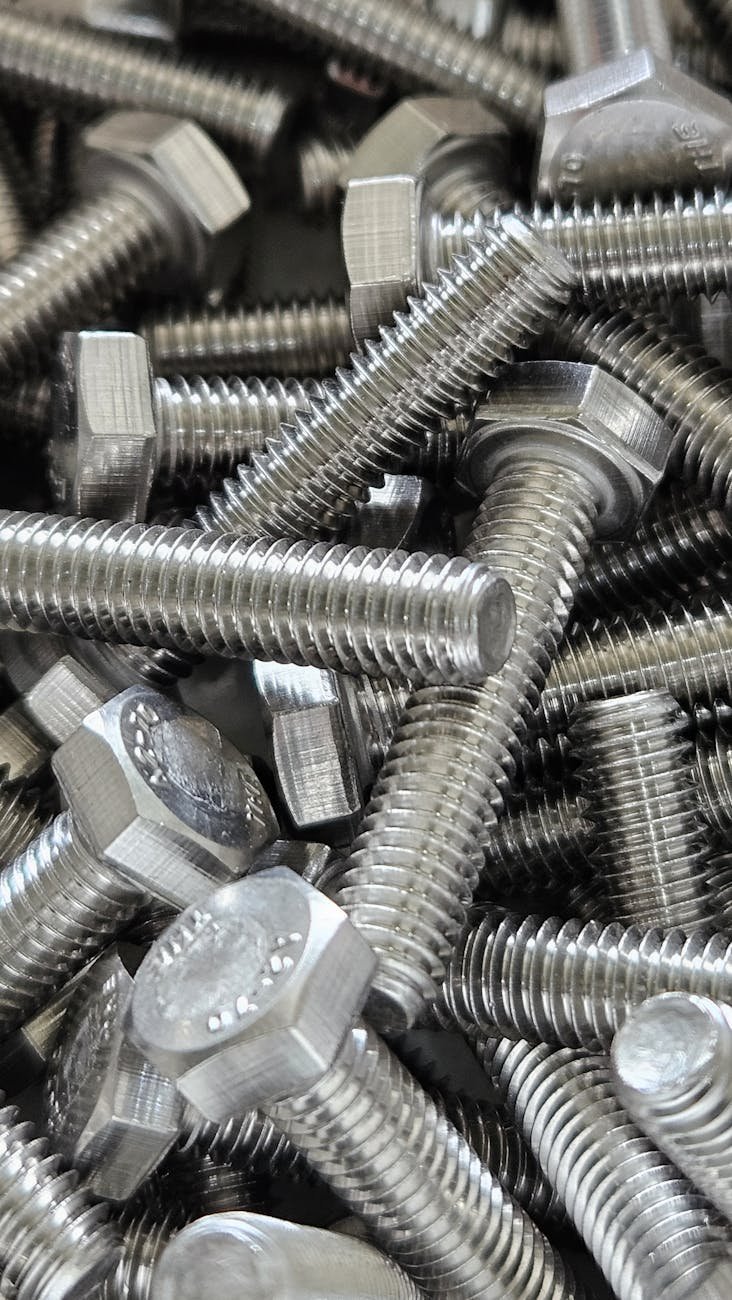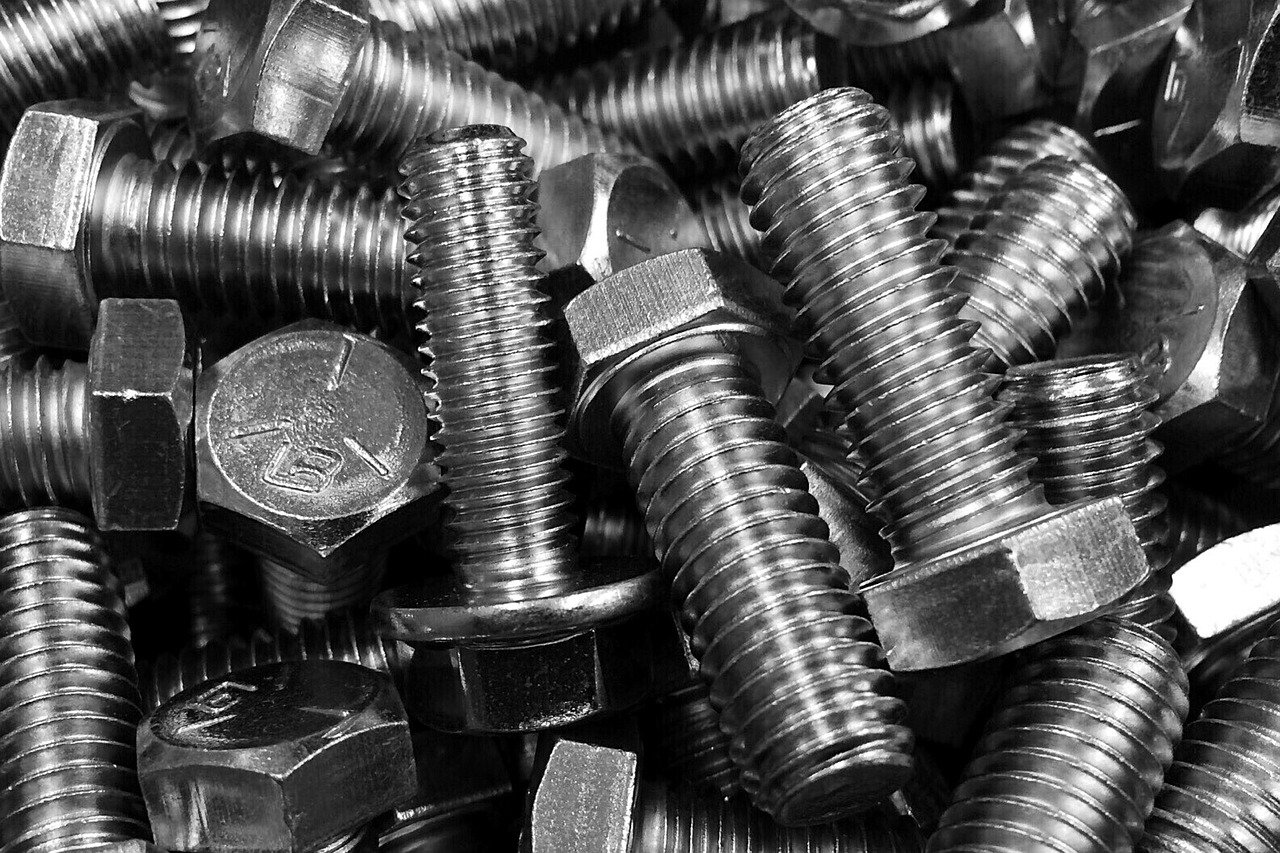By Nicolás Longo LinkedIn
(As an Amazon Associate we earn from qualifying purchases)
The success of any industrial project often hinges on the reliability of its fasteners. In particular, bolts are critical for ensuring safety and durability across various applications. This article serves as an in-depth guide for sourcing quality bolts and finding the best fastener suppliers. Whether you work in construction, manufacturing, or automotive sectors, knowing where to procure certified bolts can make a significant difference in the performance and longevity of your projects. Learn practical strategies, data insights, and expert recommendations that can boost your procurement process and help you secure the ideal bolts for your needs.
Understanding the Importance of Quality Bolts in Industrial Applications
Quality bolts are indispensable fasteners that ensure structural integrity and safety. Certified bolts not only support load-bearing structures but also reduce maintenance costs over time. When sourcing bolts, it is crucial to identify suppliers that offer products meeting international standards such as ASTM, ISO, and DIN. These quality certifications guarantee that bolts have undergone rigorous testing for durability and strength. Industry experts advise that investing in high-grade bolts can lead to up to a 20% reduction in assembly failures. By ensuring your bolts meet these standards, you can enhance your project’s efficiency and reliability. Reliable fastener suppliers are a cornerstone of any successful industrial operation.
Key Characteristics to Look for When Sourcing Bolts
When evaluating suppliers, focus on several critical factors to ensure the quality of bolts:
- Certification and Standards Compliance:
Suppliers should provide bolts that comply with ASTM, ISO, or DIN certifications. This demonstrates adherence to quality and performance benchmarks. - Material Quality:
Consider the material composition, such as stainless steel or alloy steel, as these affect durability and corrosion resistance. - Manufacturing Process:
Look for bolts produced with modern techniques such as CNC machining and automated quality control, which ensure precision and consistency. - Technical Documentation:
Access to data sheets and performance reports helps verify that the bolts meet your specifications.
Ensuring these characteristics can greatly improve your procurement decisions and lead to cost savings in the long term. Knowledge of bolt quality is essential in identifying suppliers who provide high-performance fasteners that align with industrial standards.
Finding Reliable Bolt Suppliers Near You
Local suppliers can offer significant benefits, including faster delivery times and the opportunity for face-to-face consultations. To find reliable bolt suppliers near you:
- Online Supplier Directories:
Use platforms like ThomasNet or industry-specific directories to narrow down local suppliers. - Customer Reviews:
Analyze ratings and testimonials for insights into supplier reliability and customer service. - Visit Trade Shows:
Trade shows and industrial fairs allow you to engage with multiple suppliers and compare product offerings. - Local Business Networks:
Tap into local construction and manufacturing associations for trusted recommendations.
Local bolt suppliers may provide personalized customer service and technical support, essential for ensuring that your procurement process is smooth and dependable. Establishing relationships with these suppliers could also lead to volume discounts and streamlined ordering processes.
Evaluating Online Fastener Suppliers for Bolts
While local suppliers are important, online fastener suppliers offer access to a vast range of products and competitive pricing. Leading companies such as McMaster-Carr and Fastenal are renowned for their extensive bolt catalogs. To evaluate online suppliers, consider the following:
- Website Usability:
A user-friendly website with detailed product specifications, technical data, and clear images is a strong indicator of a reputable supplier. - Customer Support:
Responsive customer service and technical support can help resolve issues quickly. - Return and Warranty Policies:
Reliable bolt suppliers provide clear return policies and warranty information to ensure customer confidence. - Shipping and Delivery:
Evaluate shipping options and expected delivery times to determine if they align with your project timelines.
By assessing these factors, you can identify online suppliers that consistently deliver high-quality bolts, ensuring that your projects are never delayed by subpar fasteners.
Data Insights and Market Trends in the Bolt Industry
Recent market research indicates that the global bolt industry is experiencing steady growth due to increased infrastructure projects and industrial automation. Studies suggest that the demand for high-quality bolts is rising, particularly for specialized applications in the energy and automotive sectors. Moreover, advances in manufacturing technology have driven improvements in bolt precision and consistency. Statistical data from industry reports reveals that companies using certified bolts see a reduction in maintenance costs by nearly 15%. As the market evolves, suppliers that offer detailed technical documentation and compliance with international standards stand out as leaders. These insights can inform your decision-making when sourcing the right bolts for your projects.
Cost Considerations When Purchasing Bolts
Cost is a crucial factor when sourcing bolts, but it should never compromise quality. While lower-priced bolts might seem attractive, they often fall short in durability and compliance with safety standards. It is important to compare the total cost of ownership, which includes:
- Initial Purchase Price:
Evaluate the upfront cost of the bolts. - Long-term Maintenance:
Consider the costs associated with maintenance, downtime, and potential replacements. - Warranty and Service:
Bolts backed by comprehensive warranties and reliable supplier support are often worth the higher initial investment. - Volume Discounts:
Negotiating bulk purchase agreements with reputable suppliers can result in significant savings over time.
A comprehensive cost analysis ensures that you are making a sound investment in bolts that meet industry standards and provide exceptional performance throughout their service life.
Navigating the Supplier Selection Process with Expert Recommendations
Industry experts suggest a systematic approach to selecting bolt suppliers. Begin by evaluating the supplier’s reputation in the market. Look for:
- Certifications:
Verify that the supplier’s bolts have been certified by recognized bodies such as ASTM, ISO, or DIN. - Customer Reviews and Testimonials:
Real-life feedback from other industrial users is invaluable in assessing supplier performance. - Technical Support and Service:
Choose suppliers who offer robust after-sales support and can provide technical assistance when necessary. - Innovation and Technology:
Suppliers who invest in modern manufacturing processes are likely to offer bolts with higher performance consistency.
An effective supplier selection process enhances the reliability of your procurement strategy, ensuring that you always have access to high-quality bolts.
Steps to Verify Bolt Quality Before Purchase
Before finalizing a purchase, verify the quality of bolts by:
- Requesting Samples:
Obtain physical samples to inspect material quality, finish, and dimensional accuracy. - Reviewing Certification Documents:
Ask for certifications and compliance reports that authenticate the bolts’ performance standards. - Consulting Technical Experts:
Seek advice from industry professionals or technical consultants who understand bolt specifications. - Comparing Product Data Sheets:
Evaluate the technical details provided by suppliers against industry benchmarks.
This pre-purchase verification process reduces the risk of acquiring substandard bolts and ensures that every fastener meets your specific requirements.
Innovative Tools and Techniques for Bolt Sourcing
Technological advancements have revolutionized how suppliers are evaluated and selected. Digital platforms now offer comprehensive databases that list supplier certifications, customer reviews, and technical specifications. Here are a few innovations enhancing bolt sourcing:
- Supplier Performance Dashboards:
These dashboards provide real-time data on supplier performance metrics, making it easier to compare quality and reliability. - Automated Quality Monitoring:
Some suppliers integrate automated systems that continuously monitor bolt production quality. - Virtual Trade Shows:
Online exhibitions allow buyers to engage with suppliers from around the world without leaving their offices. - Digital Documentation:
Access to digital certificates and test reports can expedite the verification process.
Leveraging these tools enhances transparency in the procurement process and ensures that every bolt sourced meets the highest quality standards.
- Diameter: 1/4-Inch
- Length: 1-Inch
- Material: Steel

- 【Metric Flange Bolt Assortment】This is nice selection of metric flange head bolts of the most common lengths along with …
- 【10.9 Alloy and Black Galvanized】This flange bolt kit is crafted from 10.9 grade alloy steel with a durable black galvan…
- 【Time & Money Saver】Great bins for storage with a size chart on the inside and outside. Compared to the time it takes to…

- Model: M4x50mm Material: 304 Stainless steel Screw Length: 50mm/2″ Pitch: 0.7mm / 0.03″ Screw Head Dia: 8mm / 0.31″ Scre…
- Package Content: 20(+-2%)Pcsx Machine Screws; Product Name: Machine Screws Bolts ;Color: Silver Gray
- Pan head machine screws, Phillips drive. Metric machine screws for universal use

Leveraging Local and International Bolt Suppliers for Maximum Efficiency
Depending on project demands, both local and international bolt suppliers offer distinct advantages. Local suppliers often provide faster turnaround times and personalized service. Meanwhile, international suppliers may offer a wider variety of bolt types and competitive pricing. Integrating both sources into your procurement strategy maximizes flexibility and efficiency. Key tips include:
- Establish Multiple Supplier Relationships:
Diversifying your supplier base ensures that you can access the best quality bolts at competitive prices, even during supply chain disruptions. - Regular Quality Audits:
Conduct periodic audits of supplier performance, quality control measures, and adherence to international standards. - Long-term Partnerships:
Build enduring relationships with suppliers who consistently deliver reliable bolts.
Using a hybrid sourcing model minimizes risk and ensures that you always have access to quality bolts, no matter the market conditions or project requirements.
Expert Recommendations for Achieving a High Conversion Rate
To maximize the conversion rate when promoting bolt suppliers or related books, consider the following expert recommendations:
- Clear Value Propositions:
Highlight how sourcing quality bolts can lead to significant improvements in safety, cost savings, and overall project efficiency. - Data-Driven Insights:
Use industry statistics and research findings to underscore the benefits of investing in certified bolts. - Comprehensive Guides:
Provide detailed articles that cover every aspect of bolt sourcing, ensuring that potential customers can make informed decisions. - Engaging Multimedia Content:
Incorporate charts, graphs, and images that demonstrate the performance benefits and cost efficiencies of quality bolts.
Implementing these strategies can significantly enhance the credibility and conversion potential of your content, thus driving higher affiliate marketing success.
Integrating Technical Documentation and Reviews in Your Sourcing Strategy
A thorough review of technical documentation is essential in sourcing bolts. Ensure that every product listing includes detailed data sheets with:
- Material Specifications:
Information on the quality and type of metal used in the bolts. - Manufacturing Certifications:
Details about compliance with ASTM, ISO, or DIN standards. - Performance Metrics:
Data on tensile strength, load-bearing capacity, and durability. - Customer Reviews:
Verified testimonials from users who have tested the bolts in real-world applications.
Accessing comprehensive documentation reduces uncertainty and ensures that you are investing in bolts that perform reliably under stress. Many suppliers provide digital copies of these documents on their websites or upon request, reinforcing transparency and trust in the sourcing process.
Comparative Analysis: Local vs. Online Bolt Suppliers
Choosing between local and online bolt suppliers involves weighing pros and cons. Local suppliers typically offer more personalized service and faster logistics, while online suppliers may provide a broader selection and lower prices. Consider these points:
- Local Suppliers:
- Faster order fulfillment and reduced shipping costs.
- Possibility for in-person consultations and immediate technical support.
- Online Suppliers:
- Greater variety of bolt types and specifications.
- Competitive pricing and bulk purchase options.
Analyzing these factors helps you develop a sourcing strategy that ensures access to quality bolts while balancing cost, speed, and reliability.
Real-World Success Stories and Data-Backed Results
Numerous companies have reported dramatic improvements in their operations after switching to certified bolt suppliers. For instance, a leading construction firm noted a 15% reduction in maintenance issues after sourcing bolts that met stringent quality standards. Similarly, automotive manufacturers have documented enhanced performance and durability when using high-grade bolts from reputable suppliers. These success stories are supported by robust data from technical journals and industry reports, such as those available on ScienceDirect and IEEE Xplore. The adoption of quality bolts not only enhances operational efficiency but also bolsters long-term project sustainability.
Optimizing Your Procurement Process to Secure the Best Bolts
To optimize your procurement process, adopt a proactive approach:
- Create a Supplier Evaluation Matrix:
List key factors like certification, pricing, technical support, and delivery times. This facilitates comparison and decision-making. - Engage in Regular Communication:
Maintain clear and continuous dialogue with your suppliers to address any concerns and stay updated on product developments. - Negotiate Long-Term Contracts:
Secure favorable terms and volume discounts by establishing long-term agreements with trusted bolt suppliers. - Utilize Digital Platforms:
Leverage technology to monitor supplier performance and streamline ordering processes.
A well-organized procurement process ensures that you consistently source high-quality bolts, thereby contributing to the overall success and safety of your industrial projects.
Final Thoughts on Securing Quality Bolts for Your Projects
The journey to sourcing quality bolts requires diligence, research, and an unwavering commitment to safety and performance. By employing data-driven strategies and leveraging expert recommendations, you can confidently select suppliers that offer certified bolts meeting international standards. Whether through local partnerships or international online catalogs, each step of the procurement process plays a vital role in ensuring that your projects are anchored by fasteners designed for durability and reliability. Embrace these best practices, and you will unlock a competitive edge that guarantees long-term success in your industrial endeavors.
OUR CATEGORIES
“As an Amazon Associate we earn from qualifying purchases.”











































































































































